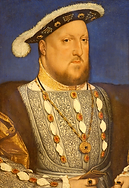





Welcome to Bristol Greenbank Bowling Club
Established 1926

Lawn bowls has a rich history. It’s a story spanning multiple civilisations, as well as involving the great and the good (and in some cases not so good) throughout history. From kings and queens to the layman, it really is the game for all.
Origin
Lawn bowls origins can be traced right back to the ancient Egyptians. Archaeological findings support the theory that a game with biased stone balls was played almost 7000 years ago. Their version had sticks as targets, and would be played in the dirt instead of on grass.
A version of the game – much closer to what we would understand to be bowls – was played by another great civilisation – in ancient Rome. This version was to become modern-day bocce. It is believed that the Romans brought this game to the rest of Europe, with several countries adapting the rules creating their own version. This includes boules in France and of course lawn bowls in Great Britain.
History of lawn bowls in England
Records of bowls being played in England date back to the 12th century. The increasing popularity of bowls in England led to a string of kings and queens passing laws restricting its play. The concern was that lawn bowls were taking too much time away from men practising archery. This was important as bowmen were an integral part of any army, and any drop in their effectiveness in battle would have major implications for king and country.
Edward III in 1261, Richard II in 1388, Henry IV in 1409 and Henry VIII in 1541, and Queen Mary in 1555 all placed statutes restricting the play of bowls. Many of the laws restricted those of lower class from playing. In many cases the laws simply restricted when, and for how long games could take place.

Henry VIII went one step further and specifically banned the play of bowls for many labourers and ‘low-born’ people. The only time they could play bowls in 1541 was on Christmas day ‘in their master’s presence’. If you were caught playing bowls you would be levied with a large fine – an amount far beyond the income of the underclass.

Edward III
Henry VIII
Henry’s generosity of allowing bowls at Christmas was deemed too much for Queen Mary, who 1555 banned bowls from the underclass completely. She believed the game was used for “unlawful assemblies, conventiclers, seditions and conspiracies.”

Queen Mary
It wasn’t until 1845 under Queen Victoria, 3 centuries later that these laws would be rescinded.
Whilst the lower classes were restricted during this period it didn’t stop the upper classes enjoying the sport. Shakespeare mentions bowls several times throughout his work, often citing how men and women (presumably of the upper-class!) could be seen playing all over the land.
This is also backed up by the now-infamous story of Sir Francis Drake. Francis Drake – who was the vice-admiral for Queen Elizebeth’s navy – was playing bowls on Plymouth Hoe. Partway through his game, Drake was interrupted to be informed of the Spanish armada approaching. His response was to say
“We still have time to finish the game and to thrash the Spaniards, too.”
He promptly lost his game of bowls, before beating the Spanish.

Sir Francis Drake
Modern era
The game of bowls took a huge leap forward when in 1830 Edwin Beard Budding invented the lawnmower.
This helped with the preparation of greens across England, and later the world. Now greens could be maintained to a much higher standard, leading to a game much closer to the one we now know.
It cannot be underestimated the effect of proper green maintenance has had on the sport. Without such technology it would never be possible to bring quality greens to the masses, and bowls would remain a sport for the upper classes.
Bowls in Scotland and Codification
Whilst England struggled with a succession of monarchs intent on pushing the sport down, Scotland allowed the game to flourish.
As England was still building up bowls in it’s heartlands, the Scottish bowlers were prepairing for much loftier ambitions. In 1848 a meeting in Glasgow was arranged to write the laws of bowls. W.W. Mitchell, along with 200 other bowlers, wrote this first set of laws. These last to this day and form the basis of the modern game.
